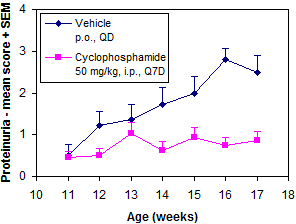
We routinely run systemic lupus erythematosus (SLE) in MRL/lpr mice at Hooke. Because it clinically resembles SLE in human patients and is relatively short (6 weeks), this is the most commonly used model of SLE.
MRL/lpr mice are homozygous for spontaneous mutation in the Fas gene, and develop lymphadenopathy (enlarged lymph nodes), splenomegaly (enlarged spleen), anti-nuclear and anti-dsDNA antibodies, and systemic autoimmunity. Autoimmune responses occur spontaneously in these mice, resulting in arthritis and glomerulonephritis resembling SLE in human patients.
We run this model in female mice; treatment usually starts when mice are 11 weeks old. By 17 weeks of age, all control mice (untreated) will develop kidney pathology - usually studies end at that point.
Our standard in vivo readouts are proteinuria and body weight, both measured weekly.
At the end of the study, we measure spleen weight, do kidney histology, and analyze anti-dsDNA antibodies, blood urea nitrogen (BUN), and creatine in serum. In some studies, we also perform histological analysis of spleens and measure spleen follicle diameter.
Autoimmune responses such as production of anti-nuclear antibodies are detectable as early as 8 weeks of age. Extensive kidney pathology is found at 4 to 7 months of age.
 |

|
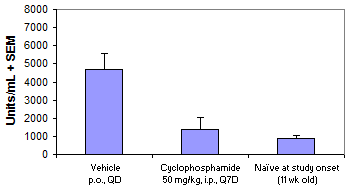 |
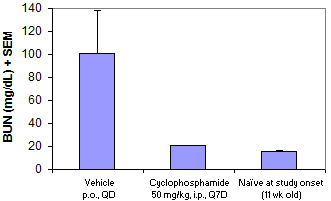
|
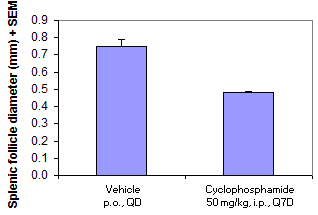 |
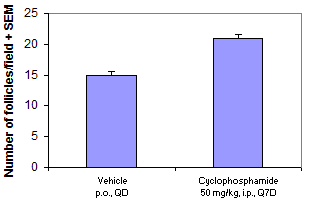
|